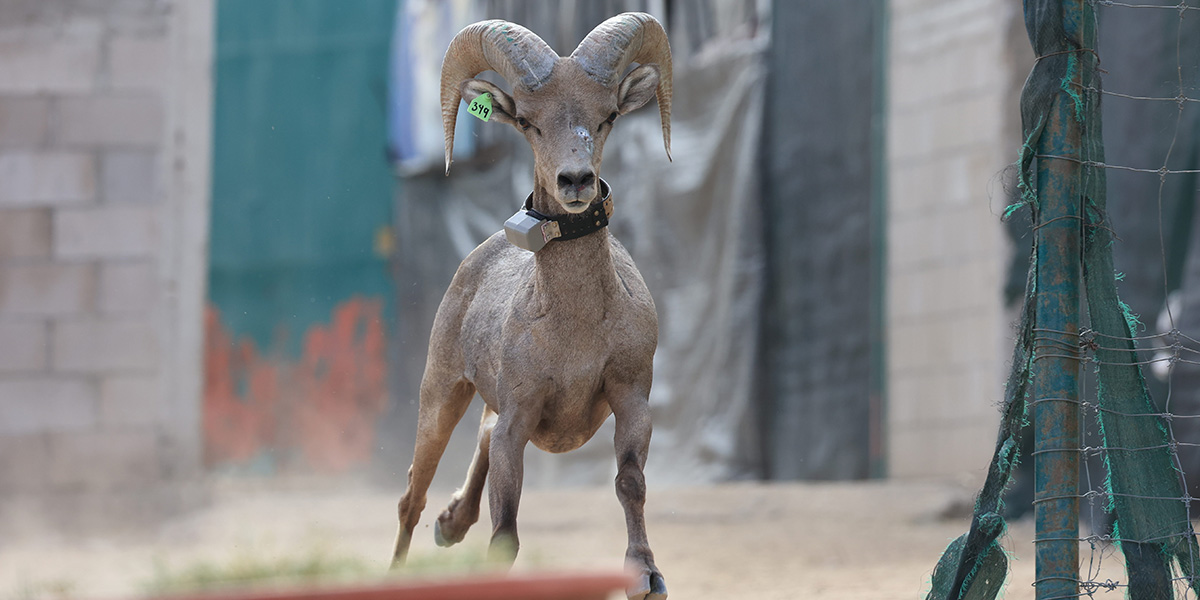
In the rugged Sierra El Alamo of northwestern Sonora, Mexico, a bold conservation mission is taking shape—one sheep at a time.
Thanks to a unique collaboration between researchers, conservationists, and one very dedicated ranching family, desert bighorn sheep are returning to a mountain range where they haven’t thrived in decades. This effort is more than a feel-good story about wildlife restoration. It’s a data-driven, GPS-collared, camera-equipped, science-meets-stubborn-determination kind of story. And it’s just getting started.
At the center of it all is a simple, decisive goal: to put and keep sheep on the mountain.
Leading on the science side is Texas A&M Ph.D. candidate Dylan Stewart, whose research forms the backbone of this ambitious conservation project. In partnership with the Artee family, whose land and dedication to wildlife make this project possible, Stewart and his colleagues are tackling one of the most pressing challenges in desert bighorn sheep management: understanding how these animals interact with their environment in an arid and largely understudied landscape.
With support from the Wild Sheep Foundation, Dallas Safari Club, and the Sonora Wildlife Foundation, the project is deploying modern technology to answer old questions. The bighorns are outfitted with high-tech GPS collars, including video cameras small enough to capture the world from a sheep’s perspective. This gives researchers an unprecedented window into the animals’ daily lives. They aren’t just monitoring locations on a map—they’re physically watching how sheep interact with each other, when and where they find water, what they eat, and how they navigate harsh desert terrain.
These insights are critically important. Desert bighorn sheep are uniquely adapted to thrive in extreme conditions, but that doesn’t mean survival is easy. Limited access to water, fragmented habitats, the ever-present threat of disease, and human-caused disturbances all challenge their resilience. In Sonora, these challenges are amplified by a lack of ecological data. With so little known about habitat preferences or seasonal movements in this specific region, managers are left to guess where to restore habitat or release translocated animals. This is where this research effort stands out.
Every GPS point and video clip helps fill in the blanks. With sufficient data, the team can begin to identify the most critical habitats, predict seasonal movements, and pinpoint where water development or habitat protection efforts would be most beneficial. It’s science with a clear purpose—one that directly informs how and where conservation dollars and effort should be spent.
In 2022, the team collared and released 16 desert bighorn sheep into Sierra El Alamo. Each animal was carefully selected based on age, health, and body condition before being fitted with tracking collars and released into areas identified as high-quality habitat. Encouragingly, most of these translocated sheep quickly located and integrated with existing wild sheep in the area—a promising early sign of success. Additional collar deployments were scheduled for 2024, bringing the total number of sheep under observation to 34. Over time, their collective movements and behaviors will inform predictive habitat models, supporting more efficient and effective management.
Beyond the science, this project is also a deeply personal mission for the Artee family, who own and lease a significant portion of the land in Sierra El Alamo. Their commitment to conservation goes far beyond land ownership. They’ve made it their mission to bring wildlife back to the mountains. That means hauling water, building and maintaining wildlife drinkers, improving access roads for research teams, and working together with scientists to support long-term monitoring. Their contributions exemplify what’s possible when private landowners and conservation professionals share a common vision.
It’s this kind of collaboration that makes a project like this possible. From Dylan Stewart analyzing GPS data and camera footage to the Artee family maintaining habitat on the ground, to the supporting organizations providing funding, equipment, and technical expertise, it takes every one of them to move the needle on desert bighorn sheep conservation.
Looking ahead, the work is far from over. As the project moves into 2025 and beyond, the team will be validating habitat models, refining maps, tracking survival, and identifying causes of mortality. Most importantly, they’ll be applying what they’ve learned, making decisions about where and how to translocate future animals, where to improve water availability, and where to invest in long-term habitat stewardship.
This program isn’t just about technology or data points. It’s about wild sheep on the landscape. It’s about restoring a species to a place where it belongs. And it’s about the kind of determined, collaborative conservation that puts and keeps sheep on the mountain.
Tags: Desert Bighorn